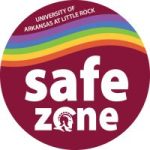Handouts can be a barrier, depending on how they are provided. Paper handouts in class are problematic for many students. In addition to students who are blind, they can also present a barrier for some students with learning disabilities, with physical disabilities that impact manual dexterity, and students with low vision. Posting handouts electronically can also be an unintended barrier, depending on the format that is used. Here are some formats that put up barriers for some students:
- Electronic handouts such as:
- Images that are not described with text
- PDF documents that are images of text rather than text-based
- Documents that do not flow logically if read with a screen-reader
- Documents that are served via flash tools that are inaccessible
- Handouts printed on paper
Here are a couple of approaches. In the first one, all students can access the handouts the same way. As a result, instructors don’t have to set up a different system when a student with a disability enrolls in the class. The second approach requires additional effort on everyone’s part each time a student enrolls for whom printed handouts present a barrier.
Inclusive Approach
Every class at UA Little Rock has a corresponding Blackboard course shell. Faculty can save their handouts in an accessible format and post them to Blackboard in advance of the class, and all students can access them that way.
What are accessible formats? Here they are in order of preference:
- HTML
- RTF (rich text format)
- Microsoft Word
Any images should have a detailed description provided.
If students with disabilities express uncertainty about the accessibility of Blackboard, feel free to refer them to the Disability Resource Center. If you would like guidance on creating accessible documents, feel free to contact the Disability Resource Center or Scholarly Technology and Resources (STaR).
Accommodation Approach
Instructors who chose to use paper handouts or other handouts that are not fully accessible will need to become familiar with the accommodation process for handouts. Here’s how it breaks down:
Instructor responsibilities:
- If needed, clarify accommodation request with the student and/or DRC staff.
- Follow up on the DRC Faculty Notification Letter you receive.
- If the student requests large print handouts, print the handouts in a larger font (usually 18 or 20, unless otherwise specified on the letter), and provide to the student at the same time the other students receive their handouts.
- If the student requests digital format, clarify with the student on the specific format and save your document in that format and provide to the student (email or on a flash drive). If you don’t have the handout on your computer, then enlarge on a copy machine.
- Some students use Braille. Many use a refreshable Braille device, so they need the handouts in electronic format. For others, a printed Braille handout is preferred. Clarify with the student and with DRC to ensure what you are providing will suffice.
- If images or graphs present a barrier to the student, provide a detailed description for the student. For line images that the student wants in tactile format, please provide the image to the DRC to convert it to a tactile image.
DRC responsibilities:
- Establish eligibility for handout accommodations.
- Provide tactile handouts for line images that lend themselves to that format.
- Be a resource for questions from either the instructor or the student regarding handout accommodations.
Student responsibilities:
- Request handout accommodations when meeting with DRC staff.
- Request Faculty Notification Letters from the DRC website.
- Discuss handout accommodations with instructors and answer any questions. Request tactile handouts for images that lend themselves to that format.



